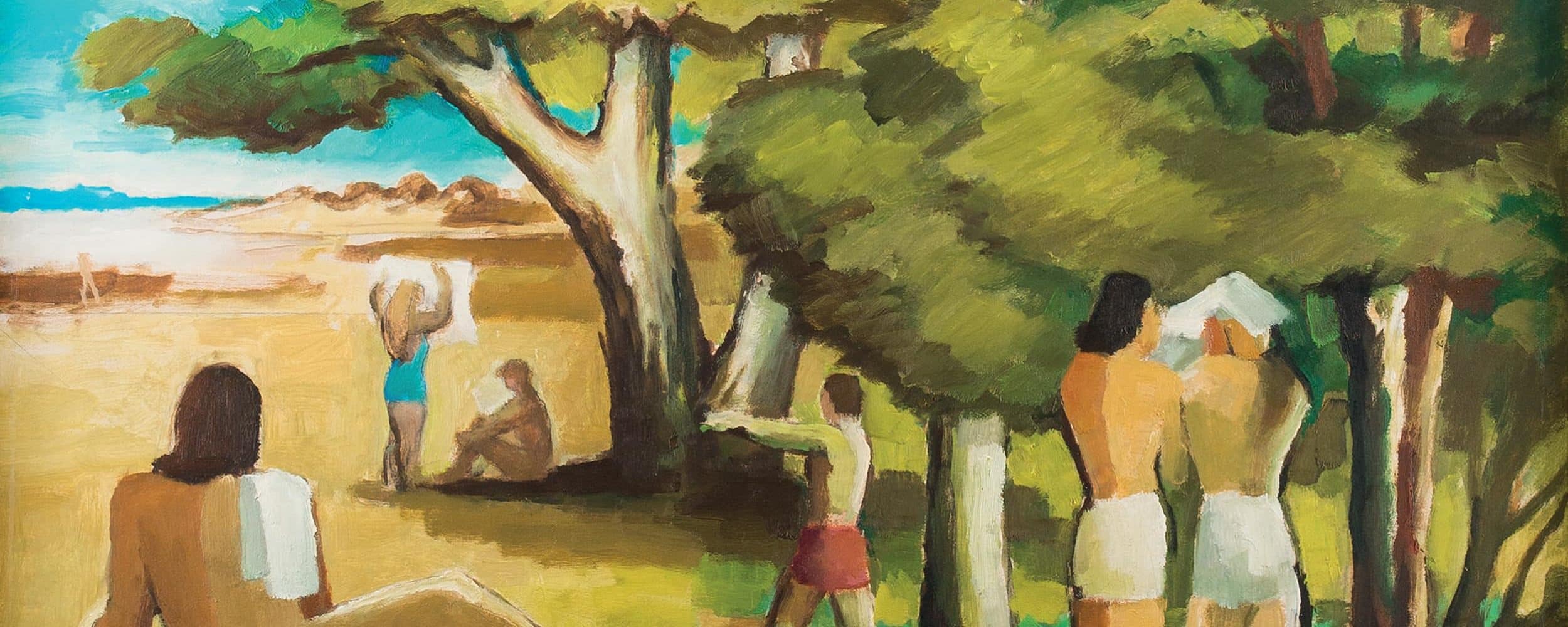

Constantin Maria Valentin Hubertus von Mitschke-Collande belonged to Silesian nobility. Mitschke-Collande initially studied architecture from 1905 to 1907 at the Technical University of Munich. Concurrently, he attended the private painting school run by Heinrich Knirr. In 1907, Mitschke-Collande enrolled at the Academy of Fine Arts in Dresden. He also undertook study trips to Florence and Rome in those years. After completing his studies, Mitschke-Collande went to Paris, where he worked with Maurice Denis and Fernand Léger and also came in contact with the Cubists. He was drafted into the military for the duration of the First World War, from 1914 to 1918.
In 1919, he was one of the co-founders of the “Dresden Secession – Group 1919”. Mitschke-Collande joined the German Communist Party (KPD), remaining a member until 1925. He was also active as a theatre set designer in Dresden. In 1923 he married Hilde Wiecke. After the Nazis assumed power in 1933, Mitschke-Collande’s paintings were declared “degenerate”, and in 1935 he was forbidden from exhibiting in Germany. Thirteen of his works were shown in the Nazis’ exhibition of “degenerate art” in Munich in 1937. All his paintings and graphic works were confiscated. In 1940 he married his second wife, Hildegard Hübner. Many of his works were destroyed in the bombing of Dresden in 1945. After the war, he continued working as a painter.
